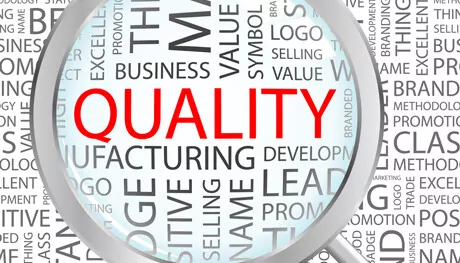With the most recent update to Annex 1, the pharmaceutical industry now has comprehensive guidance on best practices and regulators’ expectations with regard to sterile manufacturing[i]. The Annex 1 revision, which was finalized in August 2022 and came into force a year later, responds to technology advances as well as advances in sterile manufacturing in terms of the drugs and practices that regulators have been seeing.
Having these best practices documented is important, since, from my experience, industry has often been reluctant to accept and implement best practices without the regulation to support these. Having a document that people can now refer to can help with stumbling blocks, such as convincing senior management or the contract manufacturing organization to follow these practices.
With advanced manufacturing practices, there has also been a need to ensure the guidance is fit for purpose. While 25 to 30 years ago it was common to see a classic Grade A or Grade B setting with a simple enclosure or segregation by plastic curtains, today many more companies are starting to use restricted access barrier systems (RABS) and isolator systems as well as fill/finish in response to more diverse modalities and delivery technologies, and that needed to be reflected in Annex 1 (see section 4 of the revised Annex 1). In addition, there is the need to apply quality risk management.
All of this is reflected in Annex 1. It’s not too prescriptive but it does provide good oversight as to what the expectations are in the world of sterile manufacturing for medicinal products.
Roadblocks on the way to Annex 1 compliance
That’s the good news, but, as we know, change is never simple. Undoubtedly, manufacturers with state-of-the-art facilities will find ensuring compliance with Annex 1 reasonably straightforward. However, bringing an older facility or older equipment into compliance is likely to be more challenging. First, there is the inevitable cost, although, this is inherent with the business and the need to make continuous improvements.
Annex 1 compliance also requires rethinking your processes. For example, how are you going to make sure you are in compliance with your airlocks? If your site is using a classic Grade A or Grade B finish machine, the challenge will be if you’re filing for a new product, since regulators now expect at least the RABS or the ability to implement RABS with any alternative approaches justified [1]. That means you will need to assess whether you can do that or if it will require you to introduce a completely new fill line.
Another example is if you handle lyophilized products with automatic loading and unloading, since that will require downtime. And that brings another issue, which is ensuring stock of your medicine doesn’t run out during downtime. If you don’t have the footprint to ensure against that, you will need to consider what the alternatives are in order to make sure that you are in compliance with Annex 1.
Then there is the knowledge gap. For companies that have a process that has been running for many years, a lot of the knowledge might not have been properly written down, and people may have left. That means the rationale behind practices has not been documented. But the new Annex 1 emphasizes the application of quality risk management, so, as a manufacturer, you need to know what you are doing and be able to demonstrate that you have adopted the right approach to protect your medicinal product from contamination, and, ultimately, protect the patient.
Breaking down the barriers
To tackle these issues and ensure compliance, manufacturers will need to take some progressive steps. First, understand your process. You have a product coming in. You filter it and fill it in a vial, a syringe, a cartridge, and so on. But what are all the steps in between – from initiation at the warehouse until your product leaves the warehouse and is shipped? Map that out. Make sure you understand the requirements. Look at Annex 1 guidance but also review other regulations like FDA [2], World Health Organization (WHO) [3] or the Pharmaceutical Inspection Co-operation Scheme (PIC/s) [4] for best practice in sterile manufacturing. Valuable information can also be obtained from independent industry expert organisations like the Parenteral Drug Association (PDA) [5].
When you have mapped out your process for your sterile manufacturing and everything around it, chart what Annex 1 requires and assess what you have in place and where your gaps lie.
This process requires a multidisciplinary team, not just the quality affairs (QA) function. Ensure each of your subject matter experts assesses their area and compare it against Annex 1 guidance to ensure there are no gaps. Equally important, when you are in compliance, write down the references to your documents, reports, procedures, and policies, to facilitate your current and future processes.
If you do identify a gap, determine what type of remediation is required. For example, if it requires an engineering solution and you don’t have that right away, you can circumvent or try to minimize the gap procedurally by enhancing practices to ensure they are in compliance.
If the gap is because certain practices are not in place, you will need clear justification as to why not and what your remediation is to address this gap. For example, when it comes to cleanroom transfer hatches, the guideline recommends that personnel and material should be kept separate. However, there is a provision in Annex 1 that states if that isn’t possible, a workaround is to ensure that material and personnel can’t enter at the same time, or if you have material or personnel hatches that are not unidirectional, ensure that either personnel or material cannot go in while the other is going out.
Preparing for audits
With Annex 1 now in force, regulators are starting to audit and inspect against it. So, companies will need to show their remediation plans for addressing any gaps.
With the emphasis on having a contamination control strategy and the application of quality risk management, regulators will want to see what manufacturers now have in place. They expect the strategy to be a living document that you take your learnings from, your change controls, your deviations, and feed that into your contamination control strategy.
Another priority noted in the guidelines will be the application of different technologies, in particular the Pre-Use Post-Sterilization Integrity Testing (PUPSIT) of the sterilization filters.
Since the revised Annex 1 is so new, there is a learning curve for all stakeholders – industry and regulators alike. There have been meetings and seminars where Annex 1, and how to interpret it, was discussed. But questions remain as to whether all regulators have the same understanding and interpretation of the guidelines. To ensure clear understanding by everyone, there is a need for ongoing training and information for the end users in the pharmaceutical industry and for the regulators.
About the author:
Patrick Nieuwenhuizen is Director / Principal Consultant at PharmaLex and has more than 25 years of experience in the industry across a variety of platforms including biologics, sterile fill finish and solid oral dose.
References
- EudraLex Volume 4 Good Manufacturing (GMP) Guidelines – Annex 1, Manufacture of Sterile Medicinal products (2022) . Accessed through: https://health.ec.europa.eu/system/files/2022-08/20220825_gmp-an1_en_0.pdf
- Food and Drug Administration – Guidance for Industry, Sterile Drug Products produced by Aseptic Processing – Current Good Manufacturing Practice (2004). Accessed through: https://www.fda.gov/media/71026/download
- World Health Organization – Annex 6, WHO good manufacturing practices for sterile pharmaceutical products. Accessed through: https://www.who.int/docs/default-source/medicines/norms-and-standards/guidelines/production/trs961-annex6-gmp-sterile-pharmaceutical-products.pdf?sfvrsn=61682f0c_0
- Pharmaceutical Inspection Co-operation Scheme, publications. Accessed through: https://picscheme.org/en/publications?tri=all#zone
- Parenteral Drug Association, Points to Consider No. 1 Aseptic Processing (2023) Accessed through: Points to Consider No.1 Aseptic Processing (Revised 2023) | PDA
[i] Annex 1 : Manufacture of Sterile Products. https://health.ec.europa.eu/system/files/2020-02/2020_annex1ps_sterile_medicinal_products_en_0.pdf








